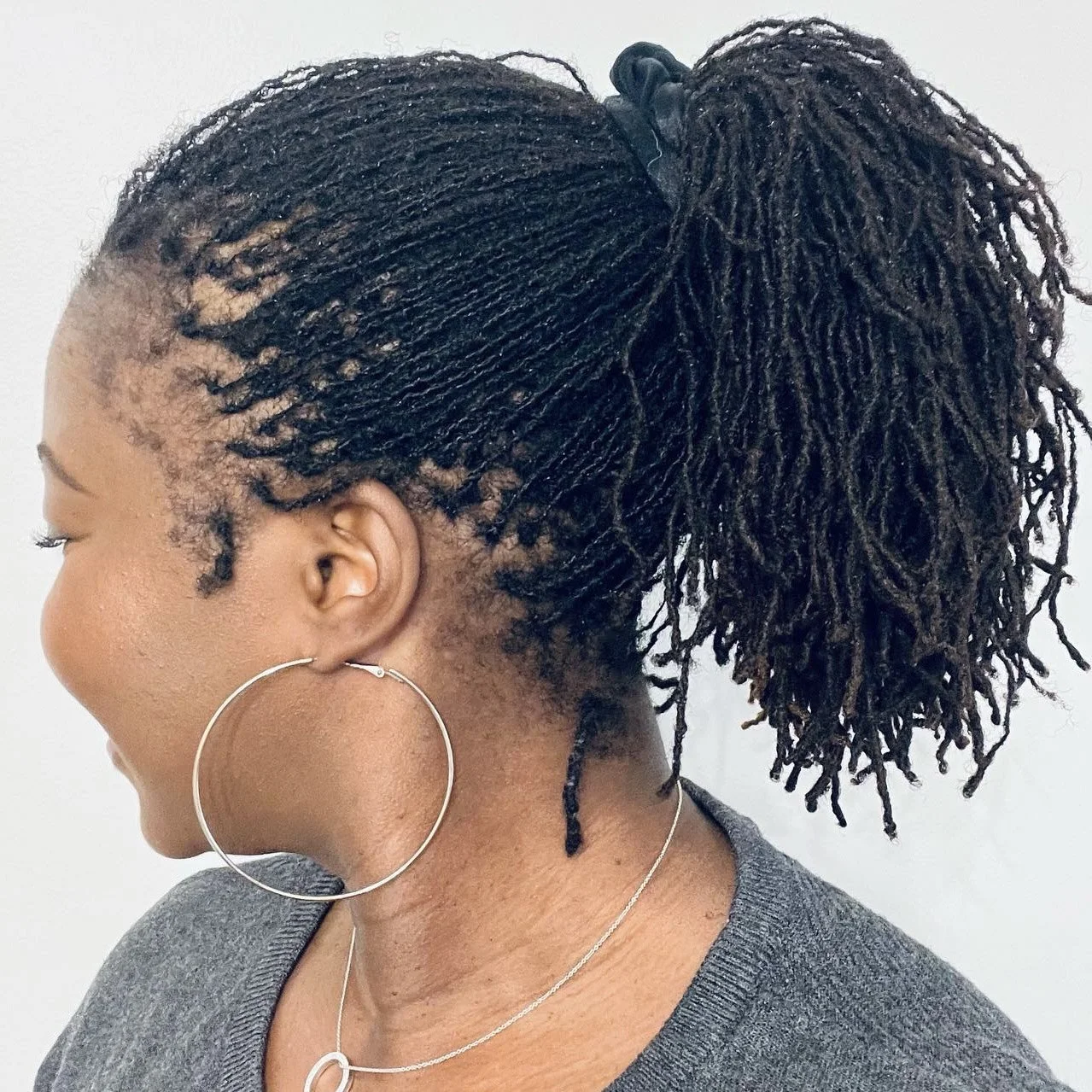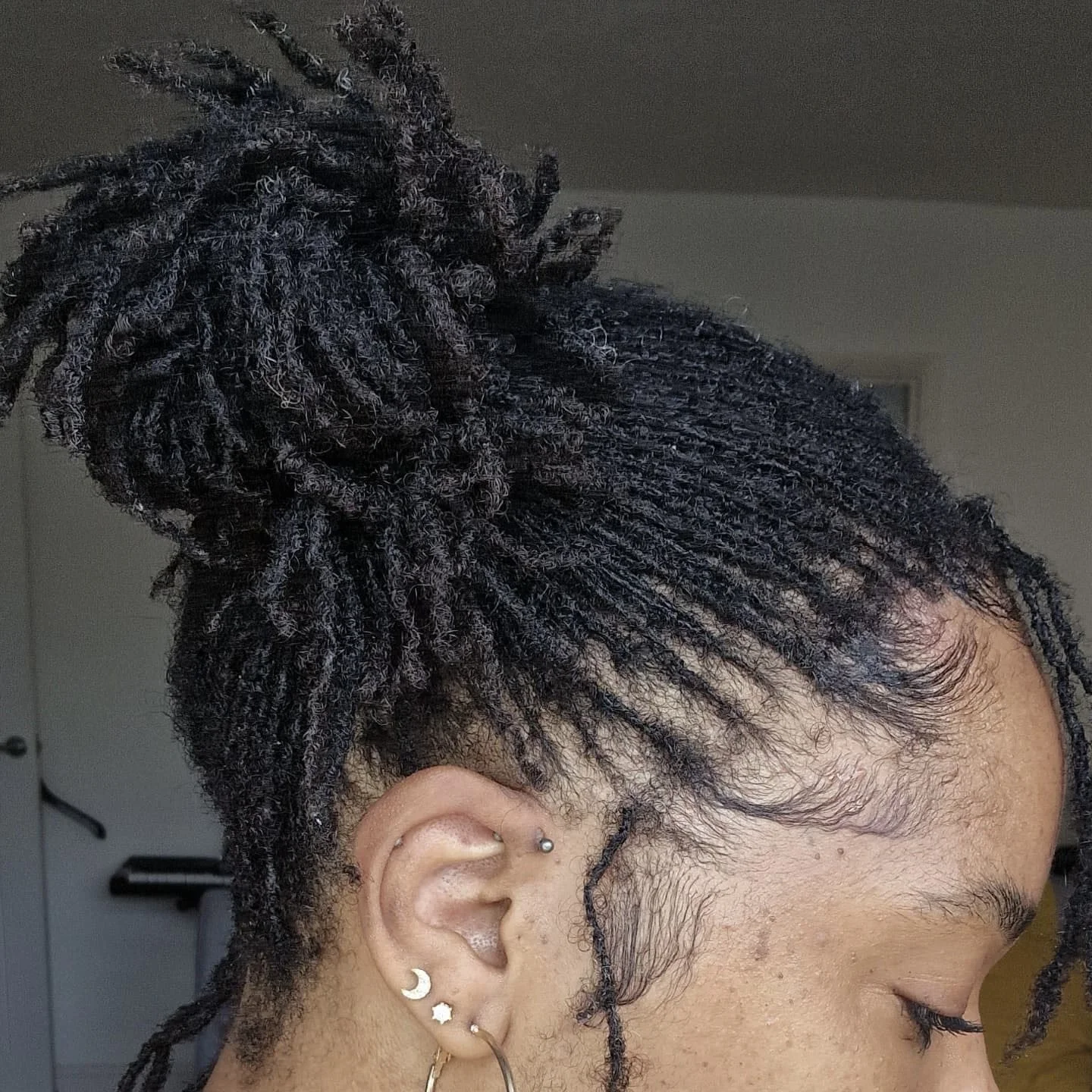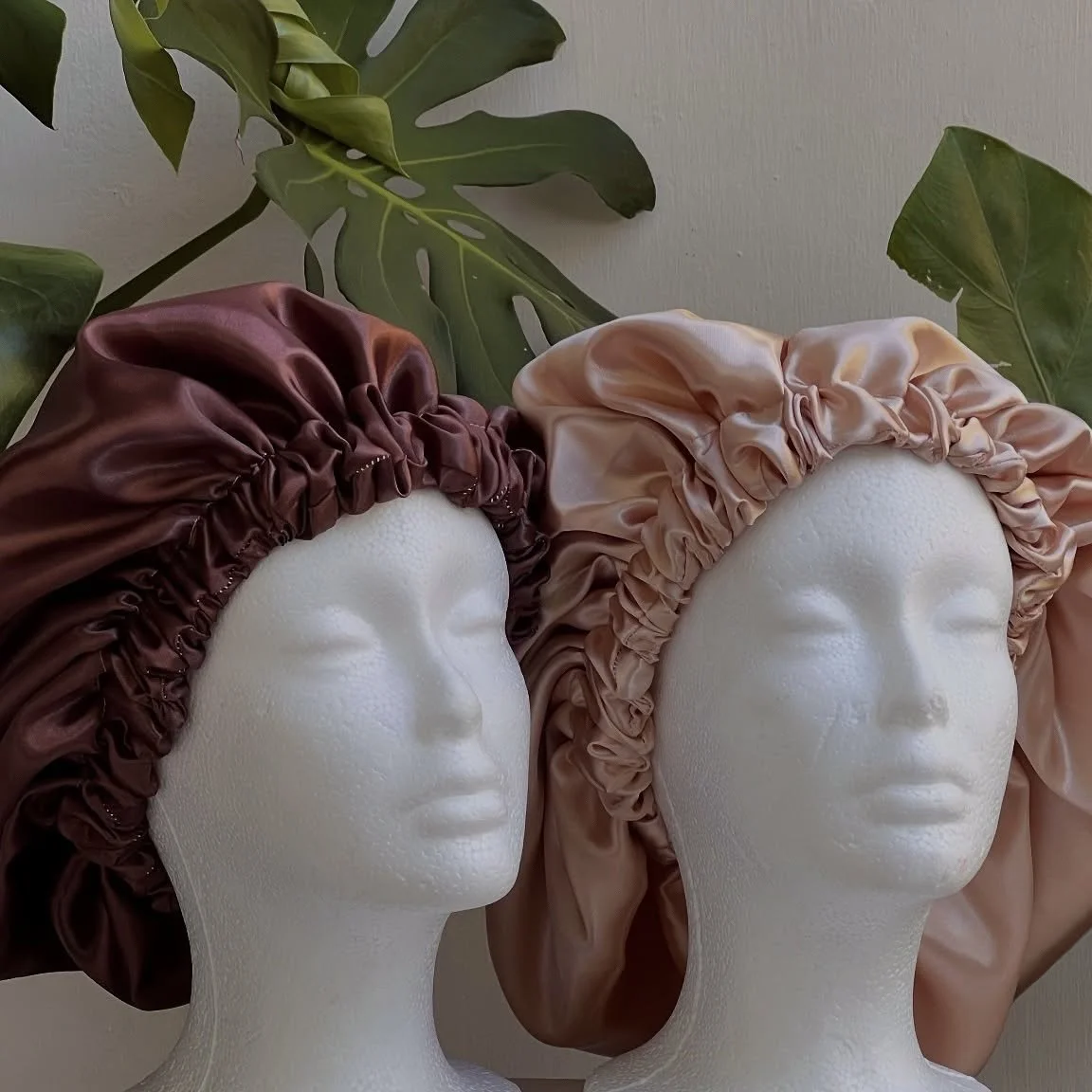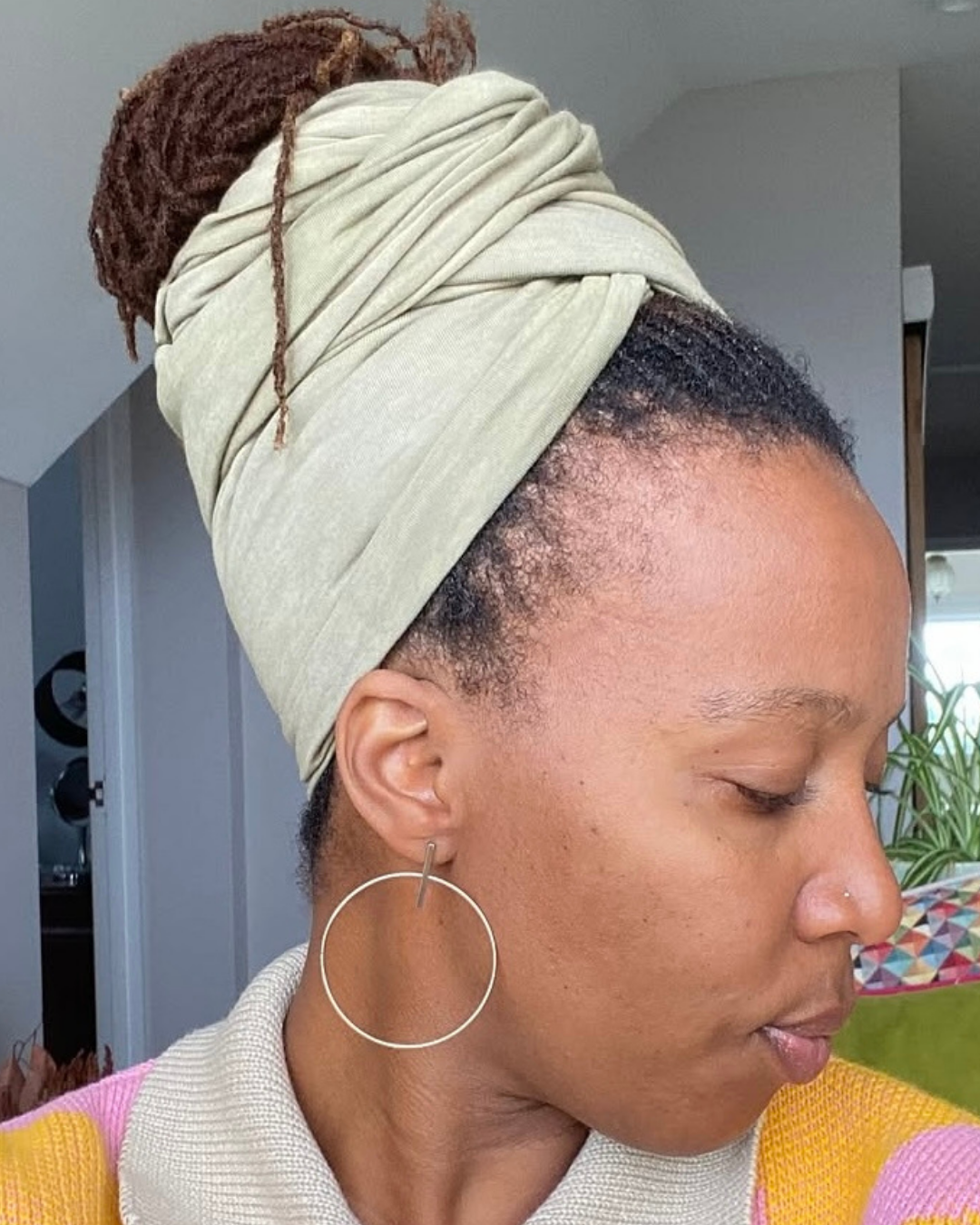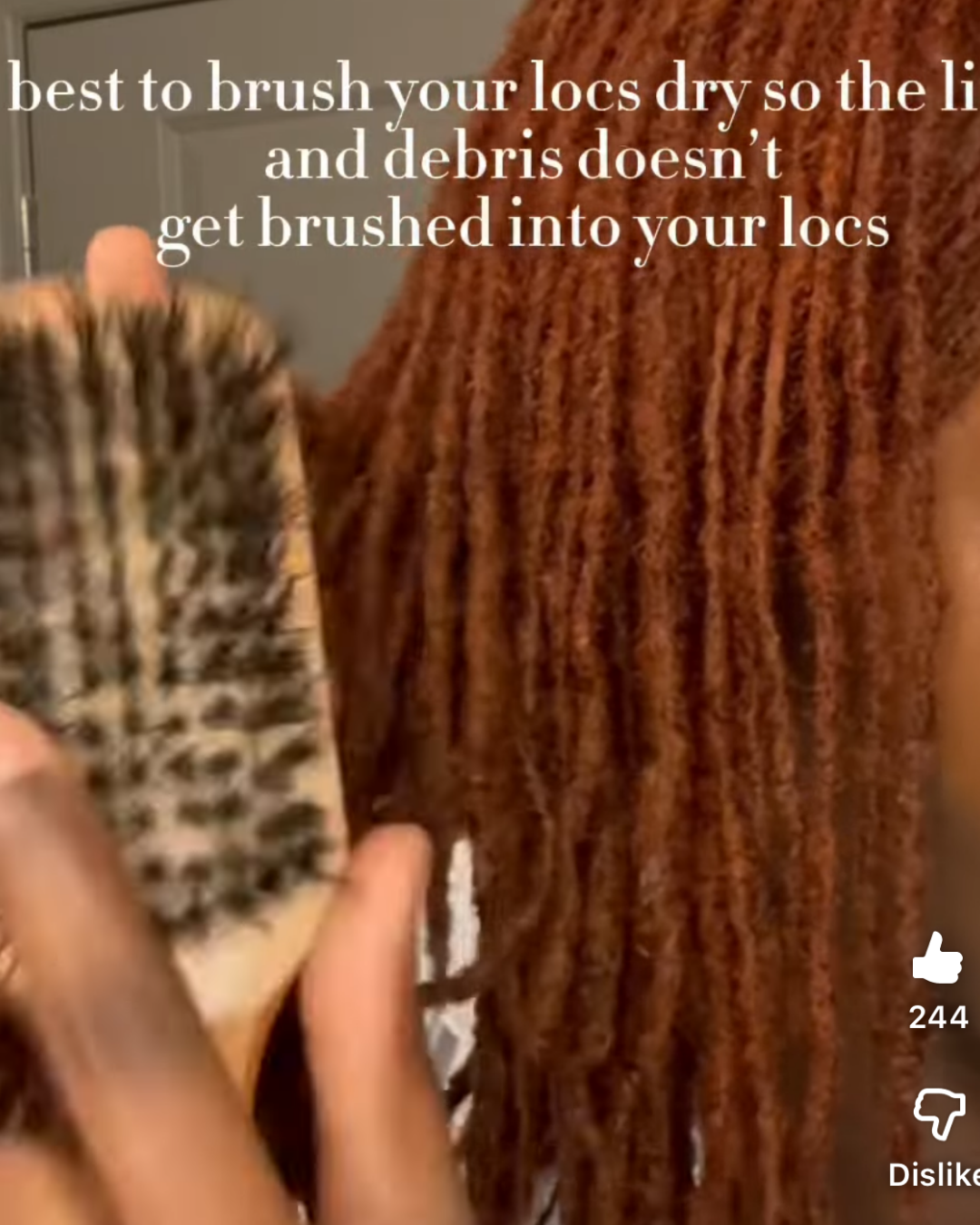How to Prevent and Remove Lint from Microlocs: Tips for Clean, Healthy Locs
The microlocs and Sisterlocks journey is a unique experience, complete with its own stages, lessons, and challenges that differ from life as a loose natural. One of the most common challenges people face is lint buildup within their microlocs. Lint consists of small fibers and debris from clothing and the environment (think pollen, dust, and fabric particles) that get trapped and interwoven into the hair. Because locs are porous, especially during the starter phase, they tend to absorb materials from their surroundings. As your locs mature and the strands tighten, these tiny air pockets begin to close, making it harder for lint and other debris to escape.
If you’ve noticed lint in your locs, don’t worry, it’s completely normal and part of the process. However, excess lint can dull the appearance of your locs, leaving white specks or even adding unnecessary weight to your hair. The good news is that with the right care techniques, you can minimize lint buildup and keep your locs looking clean, healthy, and lightweight. Keep reading to learn what causes lint and the best ways to prevent and remove it.
How Does Lint Get in My Locs?
Lint can come from almost anything, but some materials produce more lint than others. Fabrics like cotton, wool (especially angora), and chenille are known culprits because they shed tiny fibers that easily cling to hair. Here are common sources of lint you might not think twice about:
Towels: Terry cloth and cotton towels can leave behind a surprising amount of lint, especially when used to dry or wrap your hair.
Headwraps, Hats, and Caps: Beanies, headwraps, and caps made from fluffy or textured fabrics can cause lint to cling to your locs, particularly around the edges and nape.
Clothing: Sweaters and other soft cotton or wool garments tend to rub against your locs, leading to lint accumulation that is often noticeable at the tips.
Pillowcases: Routine contact with bedding made from lint-prone materials can transfer tiny fibers into your hair while you sleep.
Products: Certain hair products can also contribute to lint buildup. Heavy creams, oils, butters, and mousses often leave behind a sticky residue that acts like a magnet for lint. This residue attracts tiny fibers and debris from your surroundings, making them cling more easily to your locs.
How Do I Prevent Lint Buildup?
The best way to prevent lint buildup is by protecting your hair from materials that shed fibers easily. Once lint becomes embedded in your locs, it can be very difficult to remove without damaging your locs, so prevention is key. Choosing loc-friendly fabrics and building a simple care routine into your day can go a long way in keeping your locs clean and lint-free.
Here are some fabric swaps and daily habits that help minimize lint:
Towels: Replace cotton and terry cloth towels with microfiber cloths or dark-colored t-shirts. These materials are highly absorbent and produce little to no lint. If you color your hair, choose a t-shirt that matches your loc color to avoid visible fibers.
Headwraps, Hats, and Caps: Locs love silk and satin. Opt for headwraps, hats, and caps that are lined with these materials. If your favorite accessory isn’t lined, wear a silk or satin scarf underneath for extra protection.
Clothing: Sweaters out, locs up. When wearing lint-prone fabrics like wool or soft cotton, consider styling your locs in an updo or covering them with a scarf. If your locs do brush against your clothing, check for and remove any lint right away to prevent buildup over time.
Pillowcases: Protect your locs while you rest by wearing a silk or satin bonnet or scarf. If you prefer to sleep without one, give your locs a quick shake before bed to remove any debris, and use silk or satin pillowcases and sheets for added protection.
Products: Keep your hair care routine simple and lightweight. Hydrate your locs with water or rose water, and stick to products that don’t leave residue behind. Regularly wash with a clarifying shampoo to remove buildup and keep your locs fresh. Before each wash, check for any visible lint so it doesn’t get trapped deeper during cleansing. Avoid heavy creams, oils, and butters that can attract lint and weigh your locs down.
Styling Tools: Loc combs and soft-bristle brushes have become popular tools for maintaining locs. Gently brushing your locs or using a wooden loc comb can help dislodge lint and prevent it from settling in. Just be sure to handle your locs with care to avoid unnecessary tension or frizz.
Videos: Taking frequent videos of your locs, especially at the nape, can help you spot lint in areas that are hard to see. Regular photos and videos make it easier to catch buildup early, before it becomes harder to manage.
Check out our favorite woman and Black-owned satin-lined apparel brands, Grace Eleyae, Cee Cee’s Closet NYC, and Kin Apparel, to upgrade your collection with stylish, protective headwear and sleepwear. Our top pick is the Satin Lined Snood (a cropped hood / scarf fusion) that fits over a thick set of microlocs and is perfect in the winter when worn with a jacket.
How Do I Remove Lint from My Microlocs or Sisterlocks?
There are a few ways to approach removing lint and buildup from your microlocs or Sisterlocks. The best method depends on your comfort level, the amount of lint present, and how long it has been there.
Tweezing or Plucking: Using a fine pair of tweezers, a needle, or a safety pin, you can manually remove lint piece by piece. This method is detailed and requires patience, precision, and a steady hand, so it’s best to ask someone for help with the locs at the back of your head. For lint that’s deeply embedded, proceed with caution. You can try gently lifting or partially removing it, but avoid digging into the loc. Once lint becomes part of the loc’s structure, picking it out can create weak spots that lead to breakage. Because of this, manual removal should be done sparingly and with care.
Loc Detox / Apple Cider Vinegar (ACV) Rinse: Detox treatments can be an effective way to remove lint and product buildup from your locs. Often paired with a baking soda rinse, ACV helps deeply cleanse the hair by dissolving and loosening residue. This method works particularly well for white buildup from products, rather than fibers from fabrics. Because ACV rinses can be drying, it’s important to follow up with proper moisture and use this treatment sparingly to keep your locs healthy and balanced.
Cutting and Trimming: For severe lint that’s difficult to remove, cutting or trimming the affected areas can be an effective solution. Focus on the tips of your locs, as cutting too far up the shaft can cause unraveling. This method works best when the lint is concentrated at the ends and you’re comfortable sacrificing a small amount of length to maintain clean, healthy locs.
How Can I Hide Lint in My Microlocs or Sisterlocks?
If removing lint isn’t an immediate option, there are ways to conceal it without causing damage to your locs.
Accessorize: Add loc jewelry, such as cuffs, twine, or rings, as a quick and easy way to hide lint throughout your locs. For more inspiration, check out our Microlocs Accessories Guide.
Style: Depending on where the lint is located, try structured updos like buns, French rolls, or twists. Wearing your locs down can also draw attention to your overall look rather than the lint at the nape. For more hair styling ideas, explore our Microlocs & Sisterlocks Lookbooks:
Color and Dye: The most common way people conceal their lint is by coloring their locs to refresh the vibrancy and camouflage the lint. Lint tends to be more noticeable in darker locs, like black or deep brown. Coloring your locs, whether lightening to shades like blonde or ginger, or darkening to cover white specks, can help camouflage lint while maintaining your locs’ structure and integrity. For best results, follow our tips and best practices for coloring microlocs.
Watch these videos for more information on How to Prevent Lint and Buildup and How to Remove Lint and Buildup.
Tips from Microlocs & Sisterlocks Creators
Remember, linty locs are completely normal, they are a part of the journey. While lint is inevitable, it’s not a sign of unhealthy hair and doesn’t have to affect your style. With a consistent lint-prevention routine, keeping your locs clean, healthy, and beautiful is simple. Click on the images below to hear microlocs creators share their personal experiences, tips, and techniques for managing lint.
Lint Confessions and Testimonials: Dealing With Lint & How to Spot It
Lint Prevention and Removal Techniques: Picking Out Lint and ACV Rinses
Microloc Care Tips: Brushing Your Locs & Wearing a Bonnet
Picture featured in cover photo is from @kendrakenshay.

